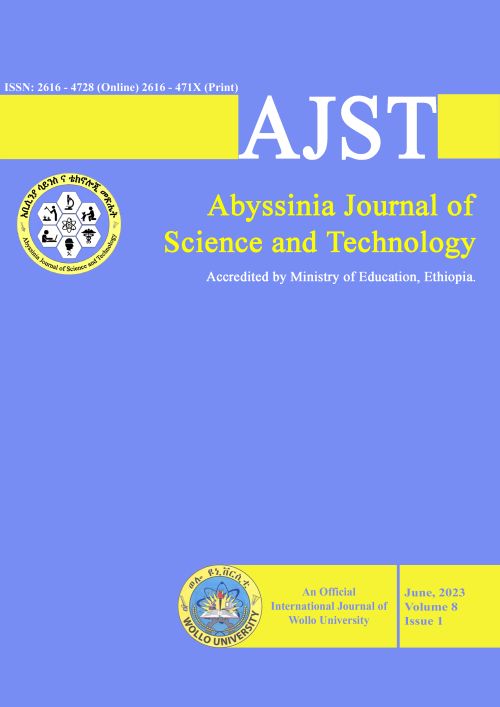Main Article Content
Assessment of the antibacterial and antioxidant potentials of mistletoe grown on Schinus molle L., from Yegof National Forest Priority Area, South Wollo, Ethiopia
Abstract
Natural products derived from plant materials serve as potential sources of antimicrobial agents, and are very effective in preventing the destructive effects of oxidative stresses. The current study aimed to assess the antibacterial and antioxidant potential of solvent extracts of mistletoe (Tapinanthus globiferus) leaves. In this study, solvent system extraction and phytochemical screening were employed to detect the various bioactive phytochemical components. Disc diffusion antibacterial bioassay was conducted to determine the antibacterial activities of extracts. The radical scavenging activities of extracts were investigated using 2diphenyl-1-picrylhydrazyl assay methods. During phytochemical screening, steroids, terpenoids, glycosides, alkaloids, flavonoids, tannins and anthraquinones were detected. Extracts having the concentration of 1 mg/mL revealed significant differences in their bioactivities (p < 0.05), with average inhibition zone diameters were ranging from 8.77 mm to 15.34 mm against the various target pathogens. Substantial average antibacterial activity (15.34 mm) was recorded by ethyl acetate extract against Listeria monocytogenes, a finding even greater than the positive control that showed an average inhibition zone diameter of (13.96 mm). But methanol extract revealed no antibacterial activity against most of the target pathogens tested, except on Listeria monoctogenes with average inhibition zone diameter of (11.54 mm). Most of the extracts showed no activity against Klebsiella pneumonia, except petroleum ether extract. On the other hand, solvent extracts showed promising antioxidant activities in the order of ethanol > ethyl acetate > petroleum ether. To evaluate the broader bioactivity spectrum of the extracts, wider ranges of pathogens including fungi must be considered. In addition, bioassay guided fractionation and identification of active molecules must be worked out further.







